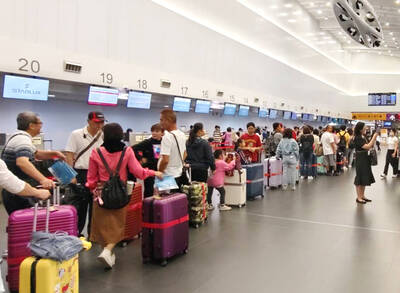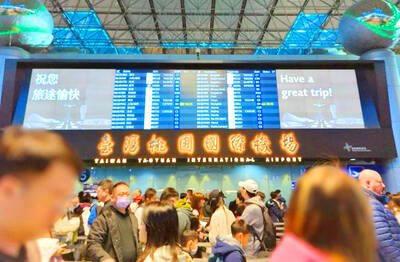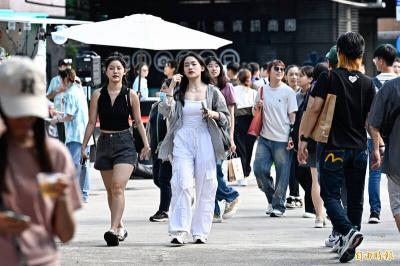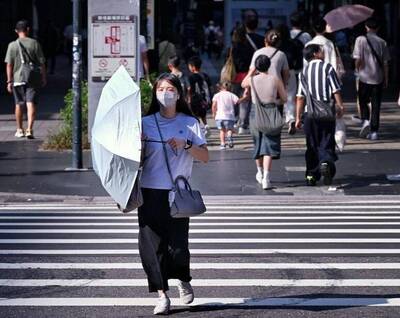Taiwan plans to increase recruitment of foreign workers so that they can work night shifts, which are often shunned by Taiwanese workers, a Council of Labor Affairs official said yesterday.
"We plan to lift the ban on foreign workers working [night] shifts because many Taiwanese workers do not like to work them. The lifting of the ban will benefit many industries, especially electronics companies and slaughterhouses which operate around the clock," director of the council Lee Ying-yuan (李應元) said at a meeting.
"We will decide on the quota for these foreign workers and submit a report to the government. If everything goes well, we can lift the ban by the end of the year at the earliest," he said.
The nation has recruited some 300,000 workers from six countries: Thailand, the Philippines, Malaysia, Indonesia, Vietnam and Mongolia. If Taiwan increases the number of foreign workers, the new workers will also come from these countries.
At the meeting, Lee also said that the council was considering scrapping the fixed minimum monthly salary for a foreign worker -- NT$15,840 (US$465) -- and allow companies that hire foreign workers to decide salary levels.
"Many Taiwanese employers complain that foreign workers' salaries are higher than Taiwanese workers' salaries. So we will consider their suggestions and may scrap the minimum salary for foreign workers," he said.

Three Taiwanese airlines have prohibited passengers from packing Bluetooth earbuds and their charger cases in checked luggage. EVA Air and Uni Air said that Bluetooth earbuds and charger cases are categorized as portable electronic devices, which should be switched off if they are placed in checked luggage based on international aviation safety regulations. They must not be in standby or sleep mode. However, as charging would continue when earbuds are placed in the charger cases, which would contravene international aviation regulations, their cases must be carried as hand luggage, they said. Tigerair Taiwan said that earbud charger cases are equipped

Foreign travelers entering Taiwan on a short layover via Taiwan Taoyuan International Airport are receiving NT$600 gift vouchers from yesterday, the Tourism Administration said, adding that it hopes the incentive would boost tourism consumption at the airport. The program, which allows travelers holding non-Taiwan passports who enter the country during a layover of up to 24 hours to claim a voucher, aims to promote attractions at the airport, the agency said in a statement on Friday. To participate, travelers must sign up on the campaign Web site, the agency said. They can then present their passport and boarding pass for their connecting international

Temperatures in northern Taiwan are forecast to reach as high as 30°C today, as an ongoing northeasterly seasonal wind system weakens, the Central Weather Administration (CWA) said. CWA forecaster Tseng Chao-cheng (曾昭誠) said yesterday that with the seasonal wind system weakening, warmer easterly winds would boost the temperature today. Daytime temperatures in northern Taiwan and Yilan County are expected to range from 28°C to 30°C today, up about 3°C from yesterday, Tseng said. According to the CWA, temperature highs in central and southern Taiwan could stay stable. However, the weather is expected to turn cooler starting tonight as the northeasterly wind system strengthens again

Taiwan sweltered through its hottest October on record, the Central Weather Administration (CWA) said yesterday, the latest in a string of global temperature records. The main island endured its highest average temperature since 1950, CWA forecaster Liu Pei-teng said. Temperatures the world over have soared in recent years as human-induced climate change contributes to ever more erratic weather patterns. Taiwan’s average temperature was 27.381°C as of Thursday, Liu said. Liu said the average could slip 0.1°C by the end of yesterday, but it would still be higher than the previous record of 27.009°C in 2016. "The temperature only started lowering around Oct. 18 or 19